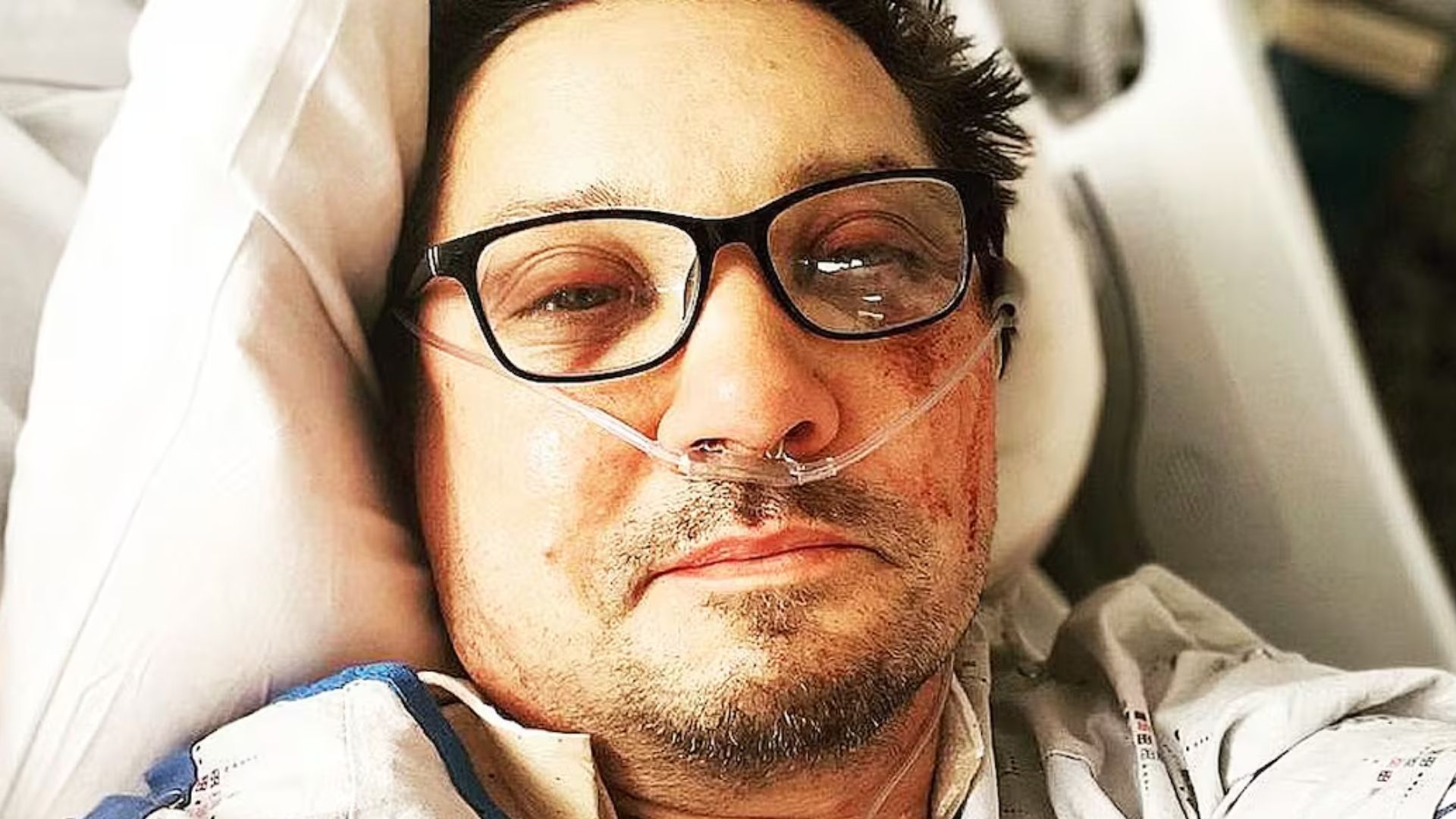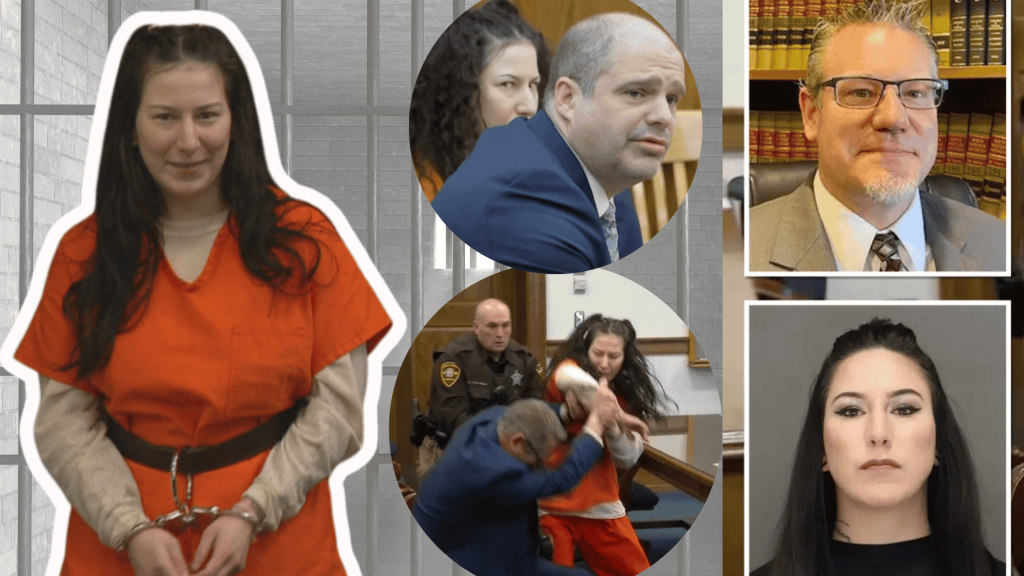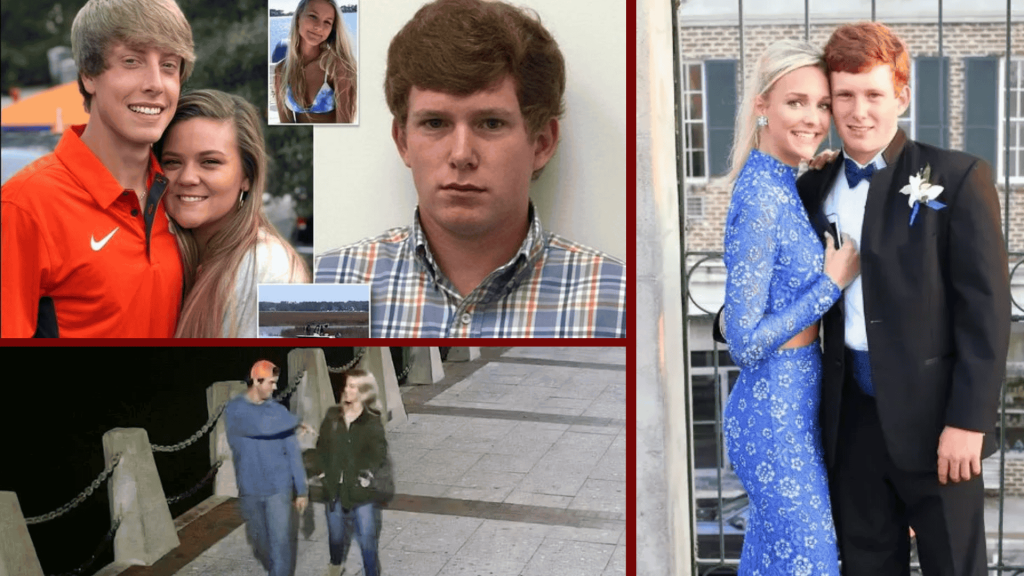On New Year’s Day 2023, Jeremy Renner was clearing snow from his driveway. Within seconds, the 14,000-pound machine he was operating crushed him nearly to death.
Jeremy Renner built his career on playing tough, resilient characters who never give up.
The 54-year-old actor earned his breakthrough with intense performances in films like “The Hurt Locker,” which earned him an Academy Award nomination for Best Actor.
But it was his role as Hawkeye in Marvel’s Avengers franchise that made him a household name worldwide.
Key highlights of Renner’s career:
- Oscar-nominated for “The Hurt Locker” (2008) and “The Town” (2010)
- Starred as Hawkeye/Clint Barton across multiple Marvel films and Disney+ series
- Lead actor in Paramount+’s crime drama “Mayor of Kingstown“
- Accomplished musician who released several EPs alongside his acting career
- Known for performing many of his own stunts in action films
Before the accident, Renner was at the peak of his career. He had just finished filming the Hawkeye Disney+ series and was actively working on multiple projects.
The events of that New Year’s morning would test everything Renner thought he knew about survival and resilience.
Jeremy Renner Accident: New Year’s Day Incident
The Jeremy Renner accident occurred at his Lake Tahoe property in Nevada on New Year’s Day 2023. Renner was spending the weekend with family for a planned ski vacation when a massive snowstorm hit the area.
He was using his PistenBully snowcat – a 14,000-pound tracked vehicle – to help his nephew Alexander Fries free his stuck truck from deep snow. After successfully pulling the truck free, the snowcat began sliding sideways on the icy driveway.
Seeing his nephew potentially in danger, Renner jumped out to warn him and stop the machine. The critical mistake: he forgot to engage the parking brake before exiting.
As he tried to jump back into the moving snowcat, his foot slipped on the metal tracks, and the massive machine pulled him underneath.
Timeline of the Jeremy Renner accident
10:00 AM – Renner begins clearing snow with the PistenBully to free his nephew’s truck
↓
10:15 AM – Successfully pulls the truck free, begins moving the snowcat out of the way
↓
10:16 AM – Snowcat starts sliding on ice, Renner sees nephew in potential danger
↓
10:17 AM – Renner jumps out without setting the parking brake, attempts to re-enter the moving vehicle
↓
10:18 AM – Gets caught under the tracks, crushed by a 14,000-pound machine
↓
10:20 AM – Nephew runs for help while Renner lies critically injured on the frozen driveway
↓
11:05 AM – First responders arrive, begin emergency treatment
↓
11:30 AM – Renner airlifted by helicopter to Renown Regional Medical Center
↓
12:15 PM – Emergency surgery begins, placed on life support
The accident lasted only seconds, but those seconds changed Renner’s life forever. He would later describe remembering every detail – the crushing weight, his head cracking against the machine, the feeling of being an “immovable object” meeting “a crushing force.”
The physical toll of the accident was almost incomprehensible, but somehow Renner survived what should have been fatal.
Jeremy Renner Accident Injuries: The Full Extent of Trauma
The injuries from the Jeremy Renner accident were catastrophic. Medical teams later said it was remarkable he survived at all. The full extent of his trauma painted a picture of just how close he came to death.
Broken Bones and Skeletal Damage: Renner suffered between 30-38 broken bones throughout his body. Eight ribs were broken in 14 places. His right knee was shattered. Both ankles were fractured. His left tibia snapped. The right clavicle and shoulder were broken. His cheekbone and eye socket were crushed so severely that his left eyeball bulged out of his head.
Internal Organ Trauma: The crushing weight caused massive internal damage. His liver was pierced. One lung collapsed completely. He suffered severe blunt chest trauma that required immediate life-saving intervention. The internal bleeding was so extensive that doctors had to work quickly to stabilize him.
Head and Facial Injuries: Beyond the broken cheekbone and eye socket, Renner’s head took severe impact. His skull cracked, but thankfully didn’t fully fracture. The facial trauma was so severe that he later joked about needing “duct tape” to put his eye back together.
The medical team’s quick response and Renner’s excellent physical condition before the accident played crucial roles in his survival. Doctors specifically noted that his fitness level helped his body withstand trauma that might have been fatal for others.
Beyond the physical injuries, complex legal questions emerged about liability and responsibility in this private property accident.
Legal Implications of the Jeremy Renner Accident
The legal landscape surrounding the Jeremy Renner accident was relatively straightforward but offers important lessons about private property incidents. Unlike workplace accidents, this tragedy occurred on Renner’s personal property during family activities.
The Washoe County Sheriff’s Office conducted a thorough investigation and determined that no criminal charges would be filed. Impairment was ruled out as a contributing factor. The incident was classified as operator error after Renner admitted to forgetting the crucial step of engaging the parking brake before exiting the vehicle.
Key legal determinations:
- No third-party negligence or criminal liability established
- The property owner (Renner) bore full responsibility as the equipment operator
- Mechanical issues with the brake indicator light were documented but ruled non-contributory
- Personal insurance policies became the primary coverage source
- No civil lawsuits filed due to clear operator error admission
Since Renner was operating his own equipment on his own property, legal liability essentially fell on him as both the operator and property owner.
The snowcat had a malfunctioning brake indicator light, but this didn’t constitute grounds for manufacturer liability.
The road to recovery would prove just as challenging as surviving the initial trauma, requiring both physical rehabilitation and immense mental strength.
Jeremy Renner Recovery: Medical and Physical Journey
Renner’s path back from the Jeremy Renner accident has been nothing short of remarkable. His recovery story shows both the power of modern medicine and incredible personal determination.
Surgeries, Rehabilitation, and Milestones in Recovery
From life support to walking again, Renner’s physical recovery required extraordinary determination and medical expertise.
- Initial Life Support Phase: Renner spent 3-4 days unconscious on life support in the ICU while doctors stabilized his internal injuries and bleeding
- Emergency Surgical Interventions: He underwent at least two major surgeries in the first weeks, with orthopedic teams repairing bone fractures and trauma specialists addressing organ damage
- Basic Movement Relearning: Recovery began with fundamental actions like sitting up in bed without assistance, marking the start of his long rehabilitation journey
- Progressive Mobility Goals: His first major milestone involved using a walker, which gradually progressed to supervised steps on a treadmill under medical guidance
- Return to Independence: The transition from cane-assisted walking to independent mobility took several months, though he retained a permanent slight limp
Emotional Strength and Mental Recovery After the Accident
The psychological healing proved just as challenging as physical recovery, requiring Renner to confront mortality and accept permanent limitations.
- Near-Death Experience Processing: Renner revealed he briefly experienced clinical death about 30 minutes after being crushed, describing it as “the most exhilarating peace you could ever feel.”
- Fundamental Perspective Shift: This experience eliminated his fear of death and liberated him from many previous anxieties, fundamentally changing his worldview
- Physical Limitation Acceptance: The hardest mental challenge involved acknowledging he would never return to his previous physical capabilities, requiring significant psychological adjustment
- Trauma Confrontation Therapy: He deliberately operated the same type of snowcat again during recovery as a psychological step to reclaim control and overcome equipment-related fears
- Support System Utilization: Family, friends, and medical staff created what he calls an “army of people” who helped rebuild his confidence alongside overwhelming public support
This high-profile accident offers valuable insights for anyone dealing with similar risks and legal considerations.
Conclusion
The Jeremy Renner accident proves how one forgotten safety step can change everything. His remarkable recovery from broken bones shows the importance of proper medical care and personal determination.
This case offers crucial lessons about private property liability and insurance gaps. Property owners need comprehensive coverage beyond standard policies when operating heavy equipment.
Renner’s honest account also demonstrates how transparency shapes public perception in high-profile legal situations.






































